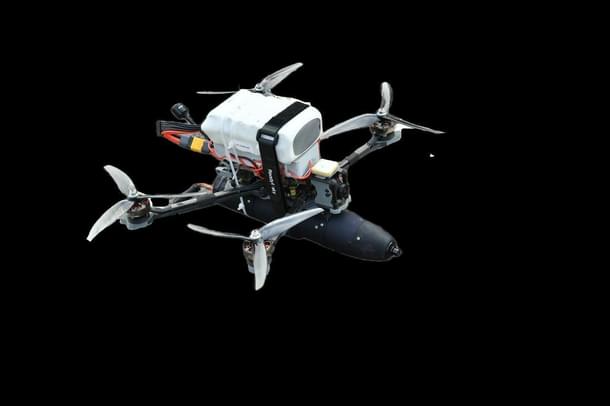Defence
Reshaping LOC In 2025 — How Cheap Drones Will Transform Border Warfare
Swarajya Staff
Apr 25, 2025, 02:23 PM | Updated Apr 30, 2025, 09:15 AM IST
Save & read from anywhere!
Bookmark stories for easy access on any device or the Swarajya app.


With Pakistan formally suspending the Shimla Agreement, a return to active hostilities along the Line of Control (LoC) has begun to take shape.
Reports of speculative fire by Pakistani troops on Indian posts mark a new phase of escalation, one that may rapidly intensify as India prepares to retaliate with force.
While cross-border firing is not new, the current context is vastly different. Pakistan has tasted success with its recent strike in Pahalgam, and the psychological advantage it draws from that will likely push it to test Indian defenses further.
Pakistan's objective appears clear: to flood the Kashmir Valley with terrorists, choke off India's counterterrorism network, and seize back the initiative it lost in 2019.
India, however, is not without options. One of the more potent among them is India redrawing of the LoC to its advantage.
This is not a new idea. In early 2001, the Indian Army conceived Operation KABADDI—a series of limited, covert strikes to capture and hold strategic Pakistani positions across the LoC.
But the plan was shelved after the events of 9/11 transformed the geopolitical landscape. With the United States entering Afghanistan, Pakistan became a critical logistics partner, and Rawalpindi found itself at the center of Washington’s war effort. In this new equation, strategic restraint—not escalation—became the Indian posture.
But even if India refrains from physically redrawing the LoC now, the current trajectory suggests that a protracted, high-intensity standoff is imminent.The nature of this conflict, however, may not mirror the artillery duels of the past. A new dimension is likely to dominate: drone warfare.
Both India and Pakistan now possess access to inexpensive commercial drones, making it possible to wage limited but impactful operations without crossing the LoC. These platforms allow militaries to avoid the steep escalatory ladder associated with direct incursions, yet still inflict significant costs on the adversary—whether by targeting supply routes, ammunition dumps, forward posts, or moving patrols.
This template has been established by the Russia-Ukraine conflict, which since 2022 has become a global case study in how low-cost drones can redefine tactical warfare.
Commercial drones, especially Chinese DJI’s Mavic and Phantom quadcopters, became critical assets for both Russian and Ukrainian forces. Priced at around $2,000, they revolutionized battlefield visibility and lethality by providing affordable surveillance, real-time targeting, and direct strikes.
In Ukraine, volunteer-driven efforts led to mass drone donations and ingenious field adaptations, including drones modified to drop grenades. These were backed by tech innovations such as night-navigation software and thermal imaging.
Russia responded in kind, accelerating the use of cheap first-person-view (FPV) kamikaze drones, and deploying them in swarms to attack vehicles, artillery, and troop concentrations.
The doctrine evolved into a layered "kill chain" approach—high-altitude drones scan for targets, mid-tier quadcopters verify them, and lower-tier FPV drones execute strikes. This has turned the battlefield into a constant surveillance zone, where movement is perilous and surprise is almost impossible.
The Indian Army is adapting to the growing role of drones in warfare. For example, the Fleur-De-Lis Brigade has developed and tested an FPV drone equipped with an impact-based, kamikaze-role anti-tank munition.

For Pakistan, with limited conventional parity, drone warfare offers an asymmetric advantage. Low-cost drone attacks allow for plausible deniability while inflicting real damage. And if Pakistan begins to employ drones in significant numbers, India will be compelled to match or outdo it—leading to an escalating cycle of drone vs drone, and drone vs infrastructure warfare.
In Ukraine, the use of commercial drones radically reshaped the battlefield. Traditional large-scale troop movements became untenable, and holding static positions turned into a deadly gamble. To survive in a drone-saturated warzone, both Russian and Ukrainian forces were forced to decentralize, break into smaller units, and rely heavily on concealment—tree cover, camouflage nets, and thermal shields became essential.
But along the LoC, the situation is fundamentally different.
There are no large formations or armoured thrusts to speak of. Instead, the LoC is manned by dispersed small-sized units occupying isolated forward posts. On the Pakistani side, many of these are co-located with or in close proximity to terrorist launch pads. This makes the LoC uniquely vulnerable—and uniquely suited—to the use of cheap, commercial drones.
In this environment, drone warfare would unfold at a hyper-local scale—post versus post, bunker versus ridge, tree line versus sentry. A quadcopter could lift off from a Pakistani post, fly low to evade detection, and strike an Indian position—damaging a surveillance camera or dropping a grenade into a mortar pit.
Such strikes would require no artillery or small arms fire, no cross-LoC incursion, and no radio communication—making them hard to detect, attribute, or preempt.In retaliation, Indian units could launch reconnaissance drones from their own posts to monitor nearby launch pads and fix the location of hostile drone operators. Within minutes, a loitering munition or an FPV drone could be airborne to hit the identified site.

This cycle—observe, fix, strike—could repeat multiple times a day, with drone teams positioned just behind the frontline posts, equipped with commercial quadcopters, batteries, and tablets.
A hill feature overlooking multiple posts could host a drone operator directing attacks downward, while the opposing side scrambles to trace the drone's origin. The line between surveillance and strike would blur, with most drones doing both in quick succession.
Over time, these duels could evolve into a routine form of contact, replacing small arms fire as the dominant means of harassment and tactical shaping.But if this plays out, it wouldn’t be the first time commercial drones have appeared along the LoC. The LoC has already witnessed commercial drone activity, with Pakistan deploying Chinese-origin quadcopters for surveillance, weapons smuggling, and aiding terrorist infiltration.
Indian forces have intercepted these drones, including south of the Pir Panjal ranges in the Jammu region, where Army Air Defence units recently downed a UAV in the 16 Corps area using the indigenously developed Integrated Drone Detection and Interdiction System (IDDIS).
There is perhaps some understanding on the Indian side of this threat escalating. With seven DRDO-designed IDDIS units already deployed and nine more laser-based anti-drone systems under emergency procurement, India is bolstering its defenses against this growing threat.
However, even with these counter-drone measures in place, the ever-present danger from above would ensure that routine tasks like resupply runs, perimeter checks, and troop rotations will remain fraught with risk. Over time, frontline engagements could shift from conventional firefights to a continuous battle for aerial dominance, with both sides deploying drones to detect, disrupt, or destroy the other’s.
This evolution would place new demands on training, logistics, and tactics—forcing units to adapt not only to a new tempo, but also to an entirely new layer of warfare on the LOC.





